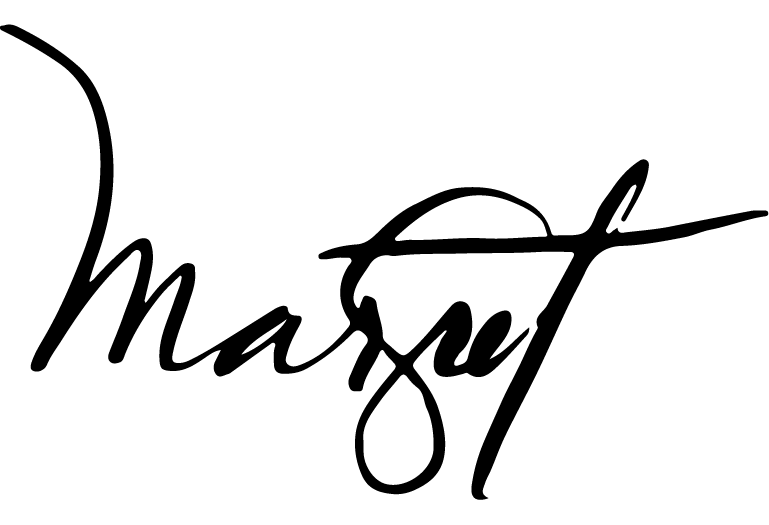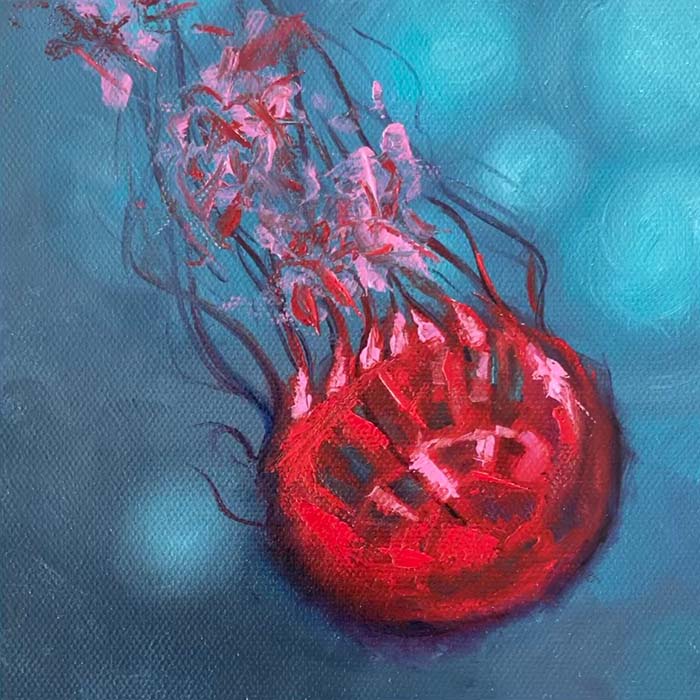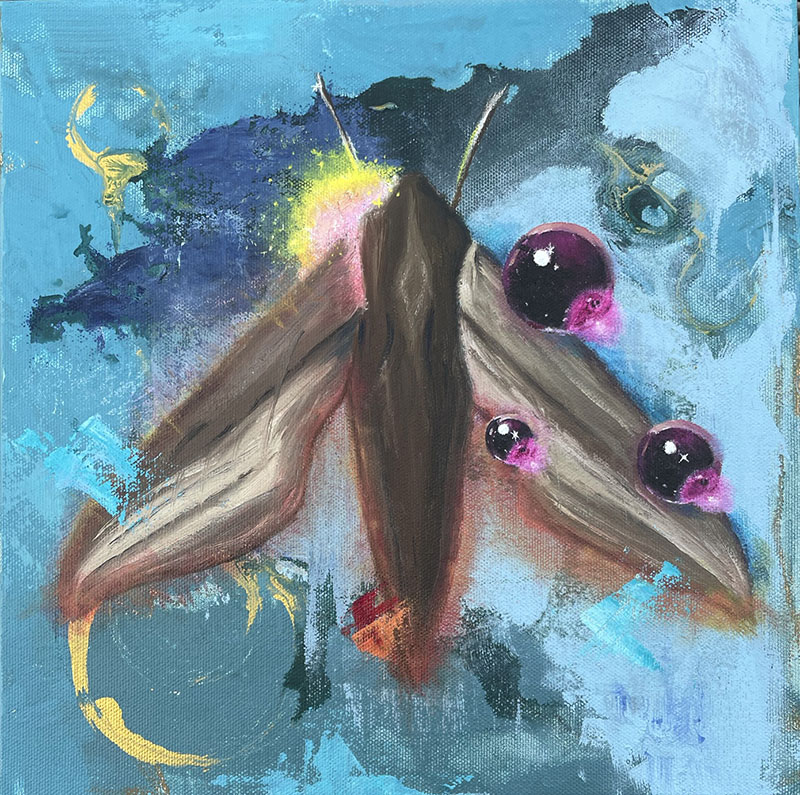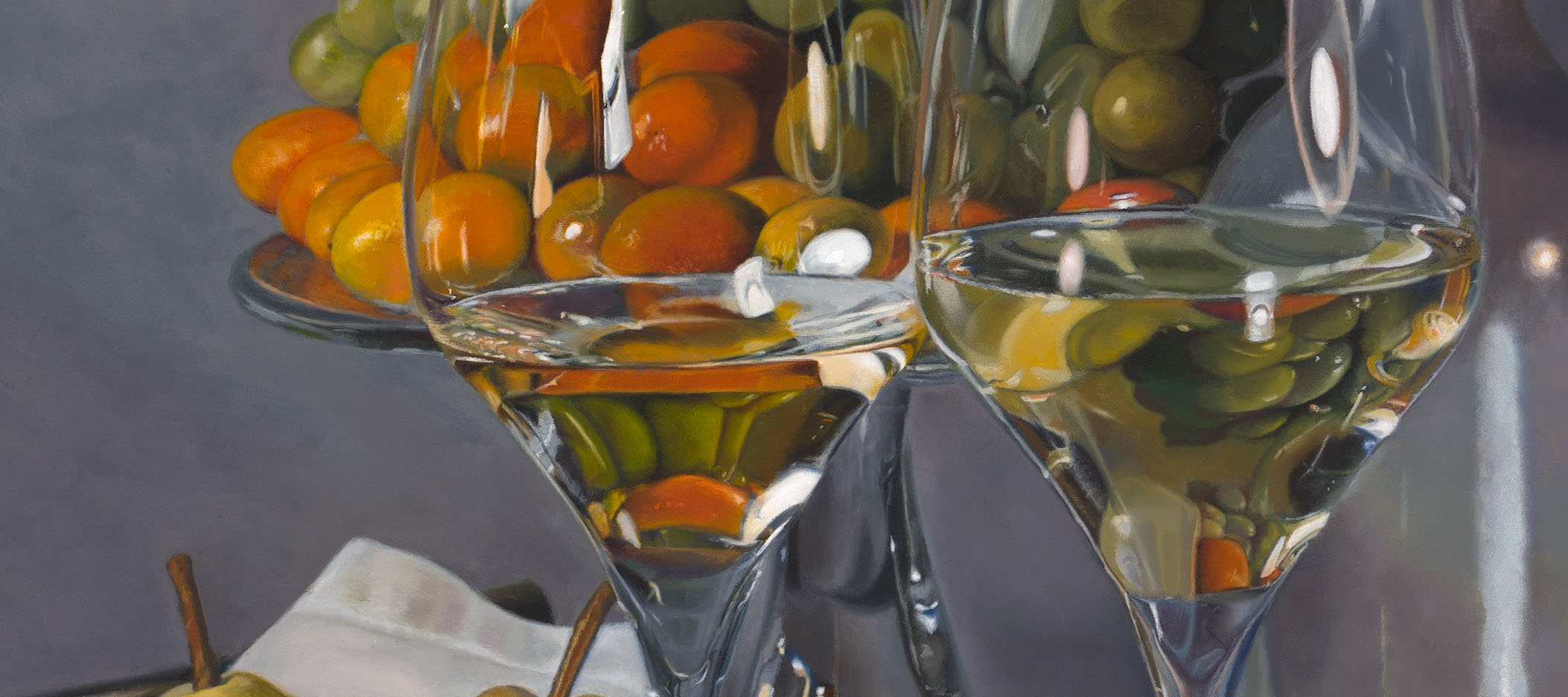
Optical illusions have always fascinated me, especially those involving the illusion of 3 dimensions in a 2D space. I adored my brown Bakelite View-Master. I sat for hours looking at immersive nature scenes and cartoons brought to life. My favorite was of Disney’s Sleeping Beauty. Flora, Fauna, and Merryweather, the fairy godmothers, suspended in the sparkly air waving their wands was mesmerizing. It allowed me to fall into imaginary scenes in a way normal photos could not. It felt magical.
DIY View-Master
I’m pretty excited to find that you can now buy a more modern View-Master with custom reals from a company called Image3D. No kidding!
It Is Not a Pipe!
You may know the painting, “The Treachery of Images,” by the surrealist painter, René Magritte. The cheeky painting of a single pipe suspended in space with text beneath it proclaiming that, “Ceci n’est pas une pipe.” “This is not a pipe.” Magritte said of the painting, “it’s just a representation, is it not? So if I had written on my picture ‘This is a pipe,’ I’d have been lying!”
It is true. All drawings and paintings depicting 3-dimensional objects in a 2-dimensional space, such as canvas or paper, are Illusions. It is a painting of a pipe; it is not an actual pipe.
About 5 years ago I was painting in my home studio, working on a large painting of wine glasses and fruit, and the young woman cleaning my house asked, “Are you painting in 3D?” My initial reaction was to smile at her naïveté, but then it hit me. This was a compliment of the highest order. I had been working on making the objects in the painting look as realistic as I could, modeling the forms so they looked believable. While I wasn’t employing any modern technology to create 3D images on canvas, I was using the techniques developed centuries ago by artists in order to create the illusion of 3-dimensional space. Her innocent question meant that I had succeeded.
After that I stepped back and looked at the painting with a softened gaze and it snapped into view. It really did POP with the feeling of 3-dimensional objects coming forward from the flat canvas. From then on I used that technique, a certain softening of my gaze, to determine if I have reached that point of successfully creating the illusion of 3D dimensional objects, that is, does it feel real?
Yes, I did paint a grayscale underlayer, carefully modeling the objects using strings of a grayish paint to create depth, known as a grisaille layer, but, I realize now that certain color choices I made boosted this effect.
There is a phenomenon called chromostereopsis in which certain color combinations produce the visual illusion of depth. The most commonly known, and perhaps most powerful, combination is red on blue, but I found that orange on green also produces the effect to a certain degree, probably because green contains blue, and orange contains red. That painting features orange cumquats in front of green grapes.
This all came back to me the other day when I was shopping for cloth face masks on Amazon. One product featured a photo of a woman wearing a red mask. Viewing it on my desktop computer screen, the mask practically leapt of the screen. Her face was not blue, but still, the red masked POPPED.
I was in the mood for a little painting fun so I picked up a small canvas and decided to experiment to see how much a red object in an oil painting would pop against a blue background. I found a photo of jellyfish taken with red light projected onto them. I painted it against a blue background with bokeh light flairs behind it to look like light shining through the water.
Even thought this is a rough study, with not too much effort given to modeling proper values, it does POP.
After that I thought about the stereoscopic pairs I’d been fascinated with in the past. Stereoscopy is the technique used in my childhood View-Master toy. Simply put, it offsets two images slightly and our amazing eyes and brain work together to combine the images to give the perception of 3D depth.
You don’t need a View-Master to create this effect. You can train yourself, as I have done, to focus your eyes in such a way that when you look at two properly offset images you produce the same effect.
I remember a time years ago when I used an app called “3D” on my iPhone to take photos of statues at the Metropolitan Museum of Art in New York City. It tickled me that I could later look at the statues with the boosted 3D effect.
That app has not been maintained, but I decided to do what a few people have done with famous paintings, and create a stereoscopic image with one of my still life paintings.
Before I show you that, here’s a stereoscopic image pair, sometimes called a stereo-pair, created using the Magritte painting of the pipe.
How to View Stereo-Pairs You can train yourself to view these stereo-pairs using a simple technique. With patience and practice it becomes second nature.
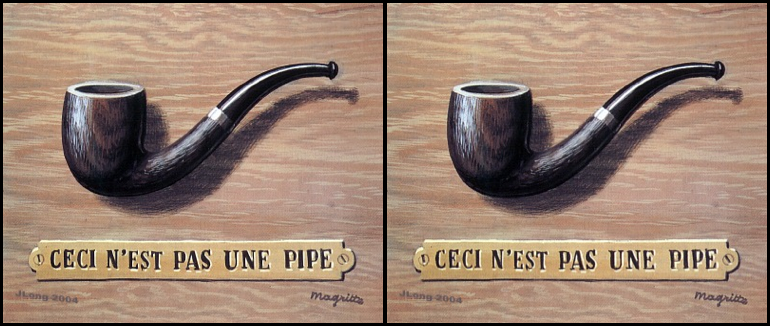
The following is a small section of a painting of orchids that I did a few years ago. I offset the entire glass vessel a few strategic pixels each way, left and right in a prescribed way, and it did pop into 3D. I wanted to see if I could boost it even further so I cut out the interior section of the vase and shifted it separately. It had the desired effect of popping into the foreground further. I went further and cut out the tiny reflections of my grandmother’s face and shifted them as well, creating yet another layer and boosting the effect even more.
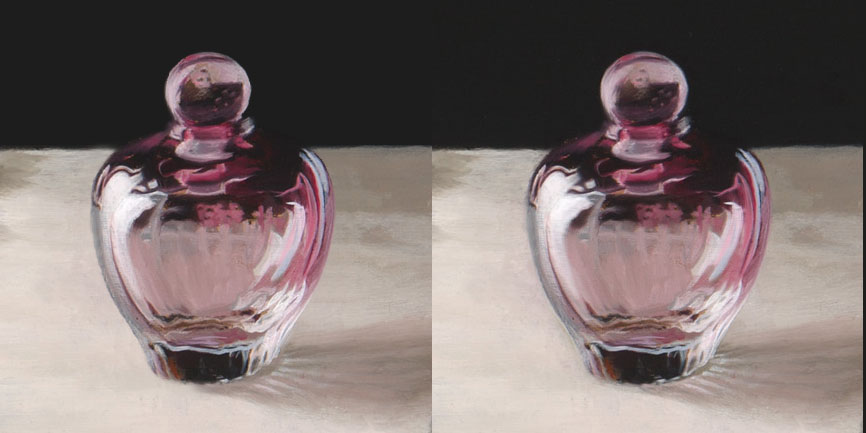
I apologize because not everyone is able to see this effect. If you can’t, know that the effect is similar to the effect of chromostereopsis, but instead of using color, it uses the shifting of images.
The Sphinx
After that I began a painting of a rather large, regal looking moth Bruce found on the side of our house in Florida. I consulted our niece, Renée, an entomologist, who informed me that this specimen is a tersa sphinx.
I wanted to work with some of the color effects I’ve mentioned, as well as experiment with new colors in my palette (Cyan/Cobalt Teal and Quinacridone Magenta).
Spoiler Alert
For my fellow sci-fi geeks, this painting references the “Red Angel” in Star Trek Discovery. For many episodes we see an mythical sort of figure emerging from space appearing like a brilliantly glowing angel with outspread wings. It isn’t until much later that it is revealed that the angel is really a human in a time-travel suit. Be still my time-travel-loving heart. So, here we have the rather lovely, but mundane moth, cast as the red angel.
I love painting the jewel-like water droplets in my still life paintings most of all, so I used glass marbles as a waterdrop-proxy.
